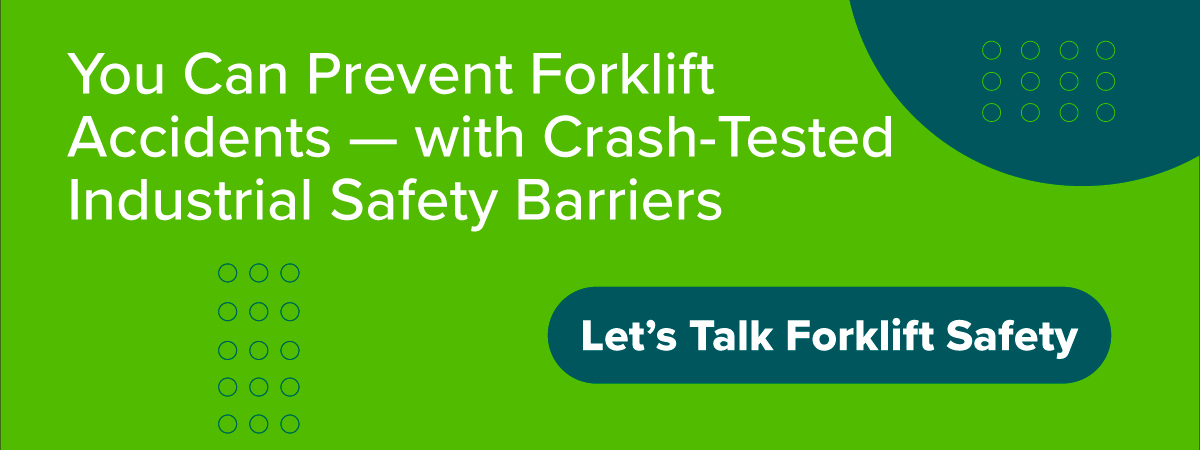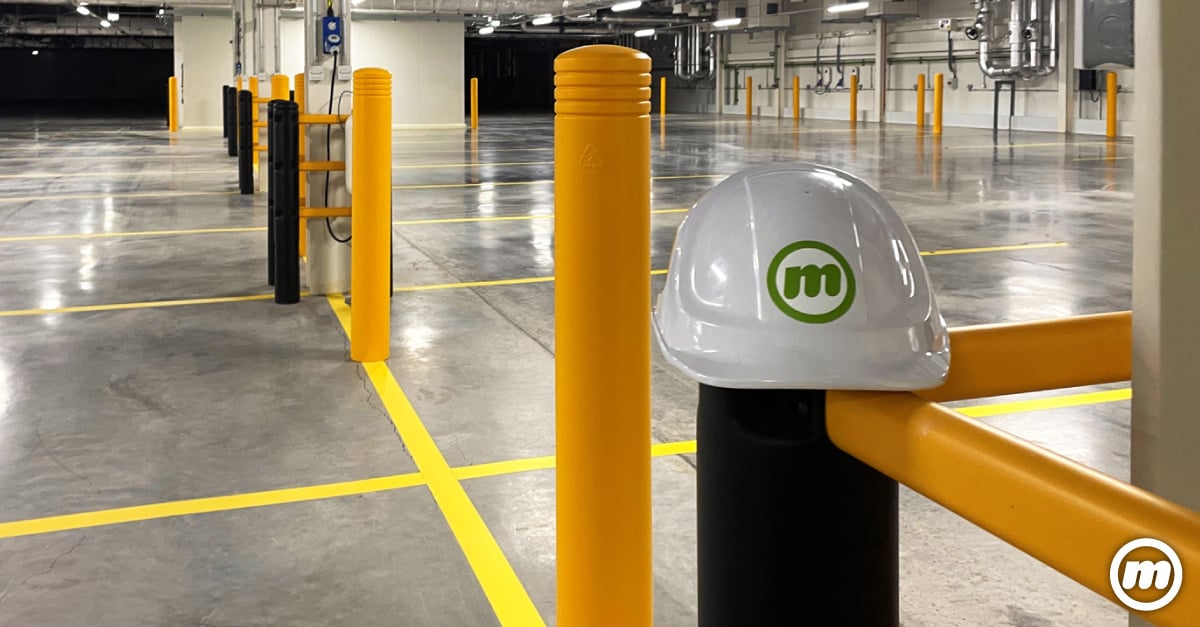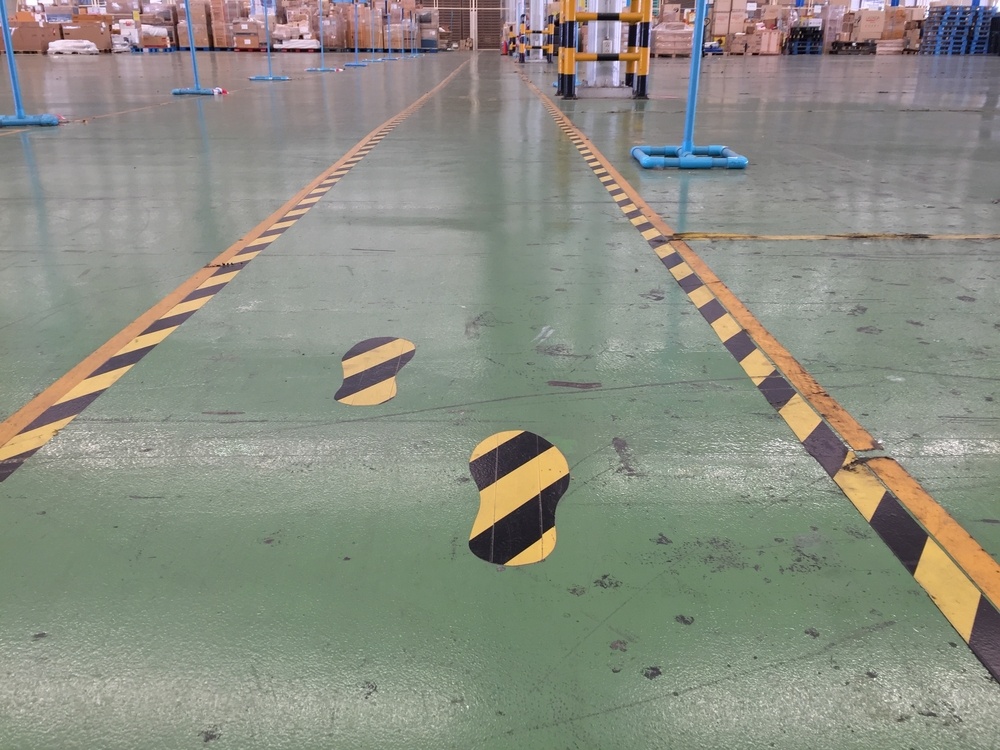It shouldn’t come as any surprise that a forklift is a dangerous piece of machinery. There are some pretty grim accident statistics to back up that notion.
In reality, powered industrial truck account for only 1% of all warehouse or factory accidents. But the accidents tend to be more serious than others, accounting for 11% of all physical injuries in those workplaces.
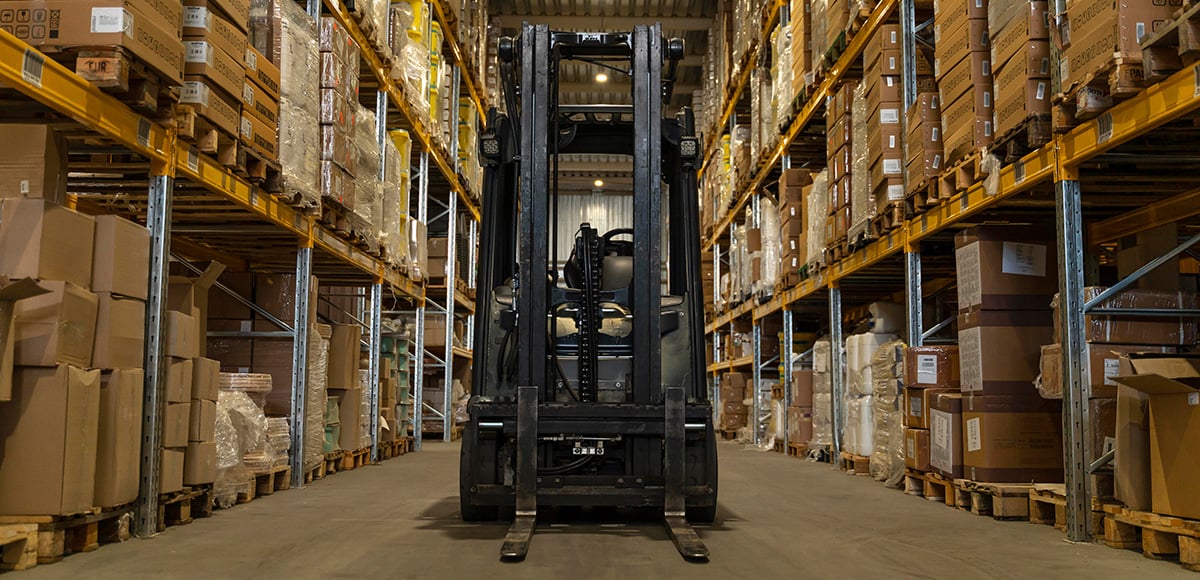
Here are eight accident statistics that should cause you to exercise extreme caution when operating a forklift:
- Around 75 to 100 workers are killed annually in forklift accidents, with a rough average of 87 deaths per year — this number has continually increased almost 30% within the last decade.
- OSHA's most recent estimates indicate that between 35,000 and 62,000 injuries occur every year involving forklifts.
- Forklift accidents that result in serious injury total 34,900 annually.
- Non-serious injuries related to forklift accidents reach 61,800 each year.
- A forklift overturning is the most common incident, accounting for 25% of all forklift accidents.
- If companies implemented more stringent training policies, the Occupational Safety & Health Administration (OSHA) estimates that about 70% of forklift accidents in the US could be prevented.
- On average 95 people are seriously injured in a forklift accident every day and 1 person is killed in a forklift accident every 4 days in the United States alone.
- 36% of forklift-related deaths are pedestrians
- Approximately 11% of forklifts in the United States will be involved in an accident each year. Meaning if your facility has 10 or more – something is going to happen this year.
Why Are Forklifts So Dangerous?
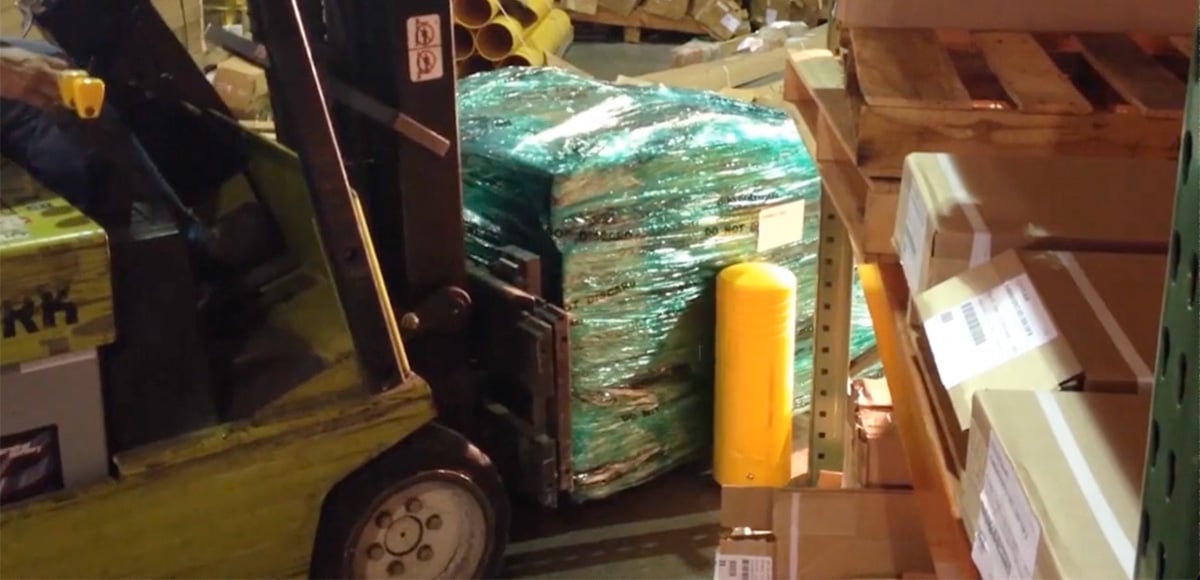 There are a number of reasons why powered industrial truck can be such a workplace hazard.
There are a number of reasons why powered industrial truck can be such a workplace hazard.
- They can weigh up to 9,000 pounds, which is three times heavier than many cars
- They can travel up to 18 mph
- Unlike a car, forklifts only have brakes in the front, making them harder to stop
- Forklifts are heavier in the rear to compensate for the heavy loads being carried in the front. This uneven weight distribution can make a forklift difficult to handle.
- A forklift is turned by the rear wheels, causing the rear end to swing outward. This increases the chance of tipping over during tight turns.
- Loads are carried in the front of a forklift, which can obstruct the view of the driver
- Forklifts are often used to raise hefty loads to considerable heights, a combination that is always dangerous
Mitigate Your Risk by Focusing on These Three Areas:
#1 Training
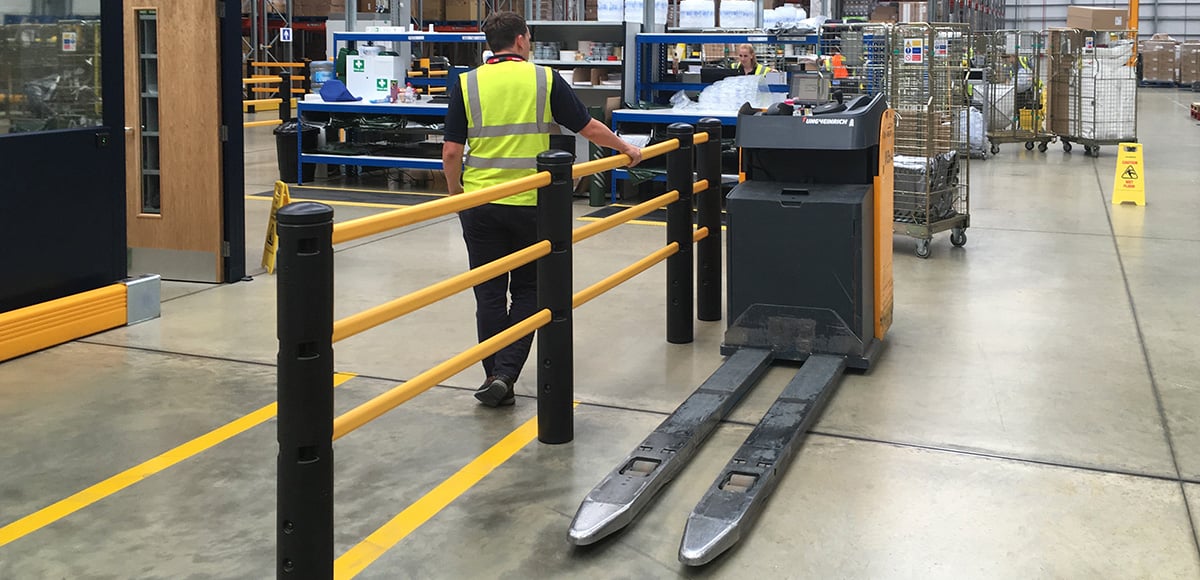 A significant number of accidents are attributed to undertrained forklift operators. It’s vital – and required – that forklift operators are trained according to employer and OSHA standards. Within that training there needs to be two main categories:
A significant number of accidents are attributed to undertrained forklift operators. It’s vital – and required – that forklift operators are trained according to employer and OSHA standards. Within that training there needs to be two main categories:
Truck Safety: There needs to be a special focus given to truck-specific topics such as controls, instrumentation, steering, visibility, capacity, and stability limitations.
Workplace Environment: The unique locations within which the trucks will operate also need focused attention. Pay attention to surface conditions, load manipulation, Pedestrian traffic, aisle widths, indoor/outdoor transitions, and more…
#2 Inspections
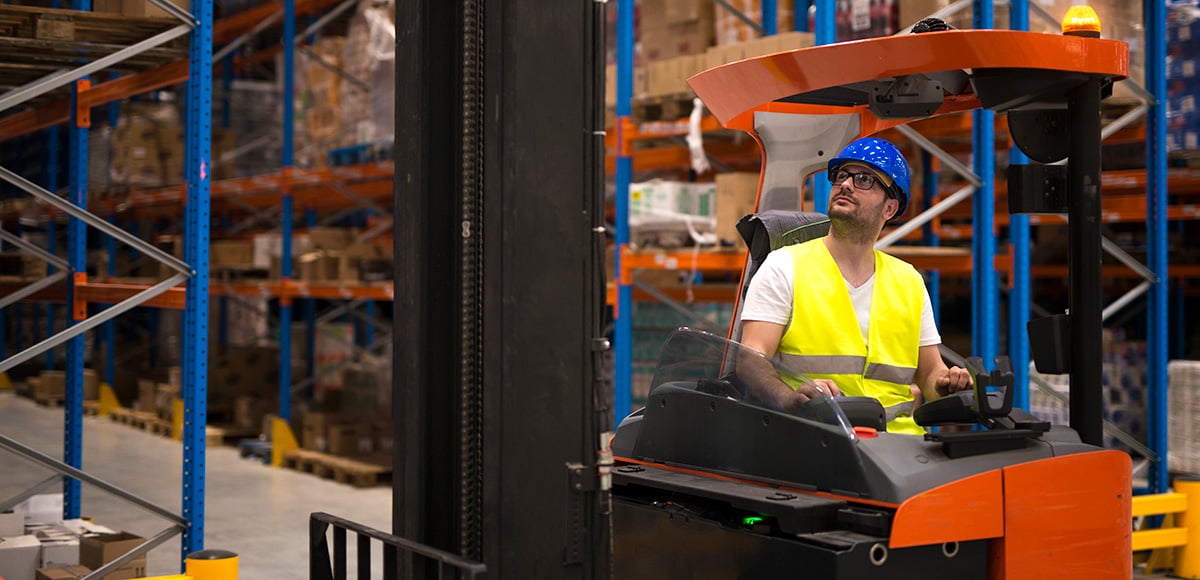 Daily inspections of the trucks should be mandatory. Some of the suggested areas of focus include:
Daily inspections of the trucks should be mandatory. Some of the suggested areas of focus include:
- Is the horn functioning?
- Are there any leaks? Could cause slip and falls and/or hydraulic failure
- Are tires inflated to proper PSI?
- Are the brakes (parking brake included) working properly?
- Is the steering system responsive and conducive to ease of control?
#3 Protection
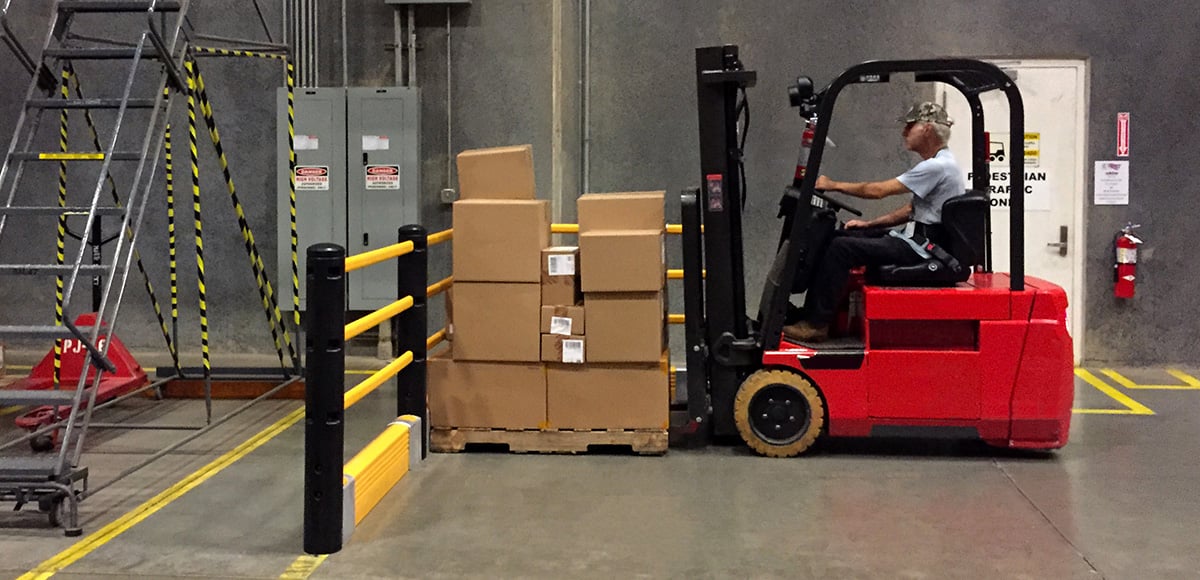 While training and inspections will hopefully prevent many forklift accidents, every facility needs to protect its people and its assets through strategic placement of impact barriers, purpose-built for the location’s risk factors.
While training and inspections will hopefully prevent many forklift accidents, every facility needs to protect its people and its assets through strategic placement of impact barriers, purpose-built for the location’s risk factors.
This starts with a McCue Walkthrough and SafeScore. Our experts will tour your facility, take measurements, evaluate equipment, and observe pedestrian and machine traffic in order to rate your current safety barriers and recommend any necessary improvements.
We also specialize in new facility safety strategies – implementing from the ground up helps to ensure you have the safest possible environment.
Glancing blows only require strong, cost-efficient products — like our Pedestrian Barrier. Full speed 90-degree impacts require best-in-class strength and safety deployment you can rely on our FlexCore Guardrail +ULTRA.
Our full suite of safety solutions focuses on stopping power, energy absorption, and impact deflection and can be viewed here.
The next step to ensure the safety of your facility is to Book your Walkthrough and receive your SafeScore.
Understanding Forklift Safety in Modern Warehouses
Forklift safety remains a critical concern in industrial environments. These powerful machines operate in busy facilities where pedestrian traffic, tight spaces, and heavy loads create challenging conditions. Understanding common hazards helps facilities implement better safety protocols.
Common Forklift Hazards in Industrial Settings
Limited Visibility Challenges: Forklifts carrying large loads often experience restricted sightlines. This visibility issue becomes more pronounced in facilities with narrow aisles, blind corners, and high-traffic intersections.
Weight Distribution and Stability: The design of forklifts creates unique handling characteristics. The counterweight system, while necessary for lifting heavy loads, affects the vehicle's center of gravity and turning radius.
Pedestrian and Vehicle Interactions: Industrial facilities must manage the interaction between powered industrial trucks and foot traffic. Without proper separation and designated pathways, these interactions pose ongoing safety challenges.
How Safety Barriers Address Forklift Risks: Physical barriers provide critical protection in facilities using powered industrial trucks. These safety systems create defined travel lanes, protect structural elements, and separate pedestrian walkways from vehicle routes. Strategic barrier placement helps prevent common incidents while maintaining operational efficiency.
Forklift Operator Safety Considerations
The Role of Forklift Operators in Accident Prevention
Forklift operators play a crucial role in maintaining workplace safety. Proper operation techniques, awareness of surroundings, and adherence to safety protocols significantly impact accident rates. Experienced forklift operators understand that every decision affects both their safety and the safety of those around them.
Daily Safety Practices for Forklift Operations
Successful accident prevention starts with consistent daily practices. This includes pre-operation equipment checks, maintaining clear communication with ground personnel, and following established traffic patterns throughout the facility.
Occupational Safety Standards for Powered Industrial Trucks
Understanding OSHA Requirements
Occupational safety regulations provide the framework for forklift safety programs. These standards address operator training, equipment maintenance, and workplace design considerations. Facilities must implement comprehensive safety programs that meet or exceed these occupational safety requirements.
Creating a Culture of Forklift Safety
Beyond compliance, successful facilities develop a culture where forklift safety becomes integral to daily operations. This involves regular safety meetings, ongoing training updates, and recognition programs for safe forklift operator performance.
Preventing Forklift-Related Accidents Through Design
Facility Layout Considerations
Strategic facility design can significantly reduce forklift accidents and forklift-related incidents. Wide aisles, designated pedestrian walkways, and clear sight lines at intersections help prevent collisions between forklifts and other workplace hazards.
The Impact of Safety Barriers on Accident Rates
Physical barriers serve as the last line of defense against forklift accidents. When properly installed, these systems prevent forklifts from entering pedestrian areas, protect structural supports, and create defined travel paths that reduce operator error.

Comprehensive Guide to Forklift Safety Management
Building an Effective Safety Management System
A robust safety management system forms the foundation of accident prevention. This system encompasses policies, procedures, training protocols, and continuous improvement processes. Successful safety management requires commitment from leadership, engagement from operators, and ongoing evaluation of effectiveness.
Key Components of Workplace Safety Programs
Effective workplace safety programs address multiple aspects of forklift operations. These include operator certification, equipment maintenance schedules, incident reporting procedures, and regular safety audits. Each component plays a vital role in reducing workplace accidents and creating safer operational environments.
The Economics of Forklift Safety Investment
Investing in comprehensive forklift safety measures delivers significant returns through reduced accidents, lower insurance costs, decreased downtime, and improved productivity. Facilities that prioritize safety management often see improvements in overall operational efficiency and employee morale.
Technology's Role in Modern Forklift Safety
Advanced safety technologies continue to evolve, offering new ways to prevent accidents. From proximity sensors and speed limiters to collision avoidance systems, technology supplements traditional safety measures. However, these technologies work best when combined with proper training and physical safety barriers.
Creating Accountability in Safety Programs
Successful safety programs establish clear accountability at all levels. This includes defining responsibilities for managers, supervisors, and operators. Regular safety meetings, performance reviews, and recognition programs help maintain focus on accident prevention.
Measuring Safety Program Effectiveness
Tracking key performance indicators helps facilities understand their safety program's effectiveness. Beyond accident rates, metrics might include near-miss reports, training completion rates, and safety audit scores. Regular measurement enables continuous improvement in safety management practices.
Take Action to Protect Your Facility
Understanding forklift accident statistics and safety principles is just the first step. Real safety improvement requires assessing your specific facility's unique risks and implementing targeted solutions.
Every warehouse, distribution center, and manufacturing facility faces different challenges based on layout, traffic patterns, and operational requirements. What works for one facility may not be sufficient for another. That's why a customized approach to forklift safety delivers the best results.
Start with a Professional Safety Assessment
McCue's safety experts can evaluate your facility's current protection levels and identify vulnerable areas you might not have considered. Our SafeScore assessment examines:
-
Traffic flow patterns and congestion points
-
Pedestrian and forklift interaction zones
-
Structural vulnerability to impact damage
-
Existing barrier effectiveness
-
Compliance with current safety standards
Evaluating Your Facility's Forklift Safety Needs
Every facility presents unique challenges for forklift safety management. Distribution centers face different risks than manufacturing plants. Cold storage facilities have distinct hazards compared to standard warehouses. Understanding your specific operational environment helps determine appropriate safety measures.
Professional safety assessments examine traffic patterns, load types, shift schedules, and facility layout to identify risk factors. These evaluations consider both current operations and potential future changes. Regular reassessment ensures safety measures evolve with operational needs.
The most effective safety programs combine multiple protective layers. Training provides the knowledge foundation. Physical barriers offer passive protection. Technology adds monitoring and alerts. Together, these elements create comprehensive protection against common forklift-related incidents in any workplace setting.
Implement Strategic Safety Solutions
Based on your assessment, you can implement targeted safety barriers that address your facility's specific risks. From lightweight pedestrian barriers for low-speed areas to ultra-strength guardrails for high-impact zones, the right combination of safety products creates comprehensive protection without disrupting operations.
Ready to reduce your forklift accident risk? Book your McCue Walkthrough and SafeScore assessment to discover how strategic barrier placement can protect your people, equipment, and facility.
Contact McCue today to discuss your facility's safety needs and learn how our proven solutions help prevent forklift accidents before they happen.
———-
Sources:
The MHEDA Journal: http://www.themhedajournal.org/2013/03/06/facts-about-forklifts/
Occupational Health and Safety Administration: https://www.osha.gov/pls/oshaweb/owadisp.show_document?p_table=FEDERAL_REGISTER&p_id=13456
Industrial Truck Association: http://www.indtrk.org/training
Daily Journal of Commerce: http://www.djc.com/news/co/11176945.html
U.S. Forklift Certification: http://www.usforkliftcertification.com/Forklift_Certification/how-fast-do-forklifts-go/
Occupational Health and Safety Administration: https://www.osha.gov/dte/library/pit/pit_q-a.html


